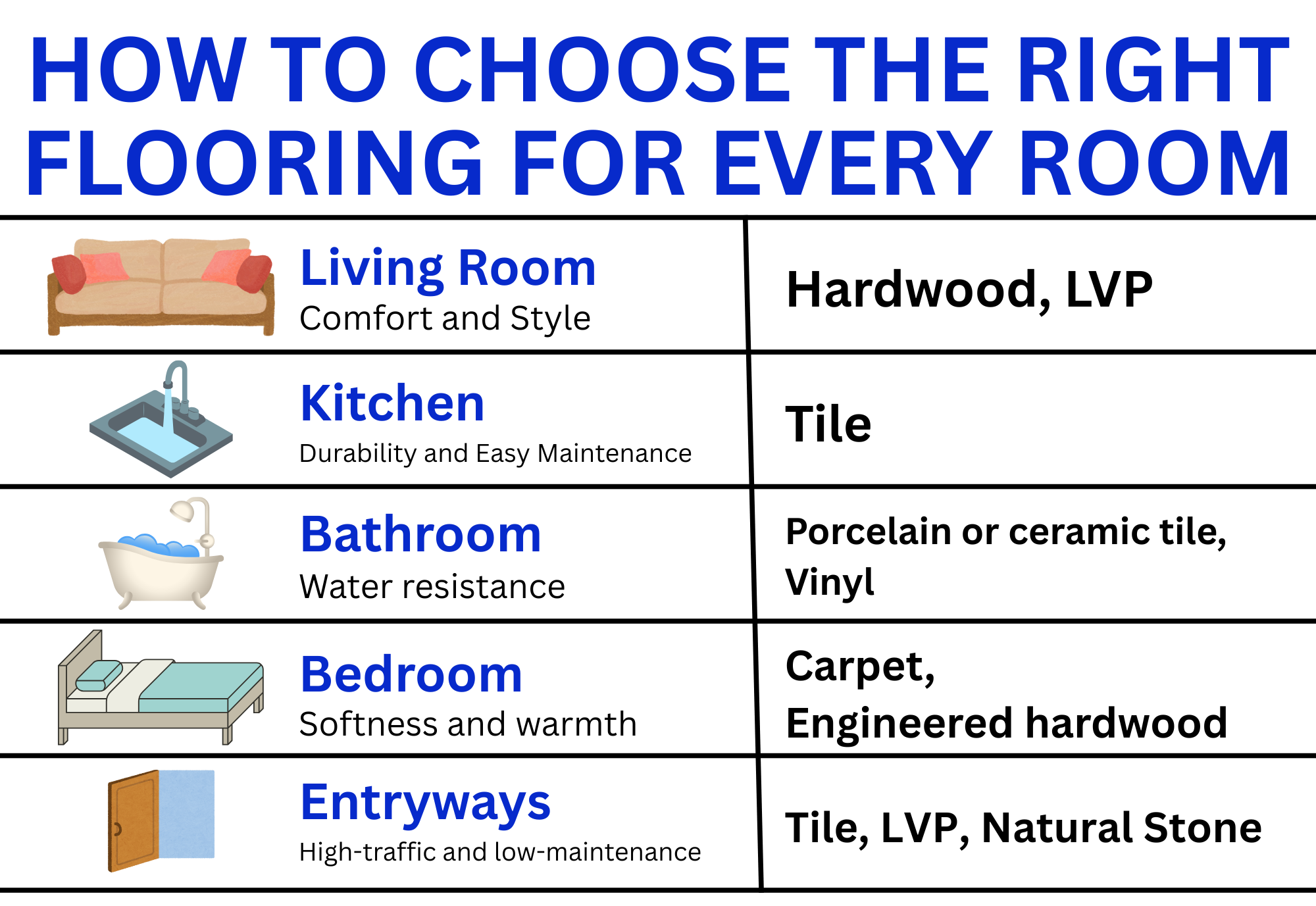When it comes to home design, flooring often gets overlooked in favor of flashy fixtures or trendy wall colors. But the truth is, the right flooring can completely transform a space—both in terms of style and function. Whether you’re building a new home or remodeling a single room, choosing the right flooring for each area is crucial to getting a result that looks great and stands the test of time.
Let’s break down how to choose the perfect flooring for every room in your house.
1. Living Room: Go for Comfort and Style
Your living room is where life happens—movie nights, game days, or just relaxing with a good book. It’s a high-traffic area that still needs to feel cozy and inviting.
Best options:
- Hardwood: A timeless choice that adds warmth and elegance.
- Luxury Vinyl Plank (LVP): A more affordable alternative to hardwood that’s also durable and water-resistant.
- Carpet: Soft underfoot and perfect for a cozy atmosphere, though harder to clean.
Tip: Use area rugs to add color, texture, and comfort without committing to full carpeting.
2. Kitchen: Durability Meets Easy Maintenance
Spills, heat, dropped utensils—your kitchen floor takes a beating. You need something that can stand up to daily messes and still look good.
Best options:
- Tile: Ceramic or porcelain tile is classic for a reason—water-resistant, easy to clean, and available in endless styles.
- LVP: It’s also a strong contender here, offering the look of wood with better resistance to moisture and wear.
Avoid: Hardwood in kitchens can warp from water damage if not sealed properly.
3. Bathroom: All About Water Resistance
Bathrooms demand flooring that can handle constant moisture. Safety is also key, especially when it comes to slips and falls.
Best options:
- Porcelain or ceramic tile: Water-resistant, stylish, and easy to sanitize.
- Vinyl (sheet or tile): Budget-friendly and surprisingly resilient.
Tip: Choose textured finishes for added slip resistance.
4. Bedroom: Softness and Warmth First
In the bedroom, comfort is king. You want a floor that feels soft underfoot and adds to the restful vibe.
Best options:
- Carpet: Warm, sound-absorbing, and plush—ideal for barefoot comfort.
- Engineered hardwood: Offers a touch of luxury with better temperature control than solid wood.
Tip: If you love the look of wood but want warmth, consider layering with a thick area rug.
5. Entryway & Hallways: High-Traffic and Low-Maintenance
These spaces see lots of foot traffic and dirt, especially if you have kids or pets. Your flooring here needs to be tough and easy to clean.
Best options:
- Tile or LVP: Both offer durability and easy maintenance.
- Natural stone: High-end and long-lasting, though pricier.
Tip: Add a durable mat or rug to catch dirt before it tracks in.
6. Basement: Moisture Matters
Basements tend to be damp, so avoid flooring that absorbs moisture or could be damaged by it.
Best options:
- Vinyl plank or tile: Water-resistant and warmer than tile.
- Concrete with epoxy coating: Sleek and industrial, with excellent durability.
Avoid: Wood and carpet, unless your basement is fully waterproofed.
Final Thoughts
Choosing flooring isn’t just about what looks good—it’s about what works best for each space in your home. Think about the function of the room, how much foot traffic it sees, and your household’s specific needs (like pets or allergies). With a little planning, you can find the perfect flooring solution for every corner of your home.
Have a favorite flooring choice or a story from your own home renovation? Drop it in the comments—I’d love to hear!


Leave a Reply